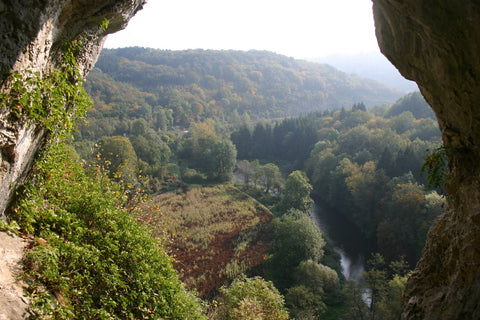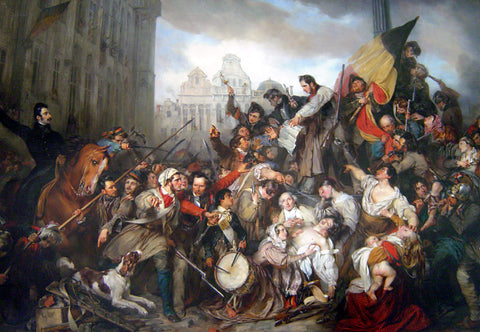- No products in the cart.
Language Matters

Belgium is at the linguistic junction between Latin and Germanic Europe. This has shaped both the country’s history and its language, with the result that Belgium is one of the few countries in the world that has no single national language. In fact it has three: Dutch, French and German, which are spread over four language areas.
Dutch is the most widely spoken language with 6.1 million native speakers, followed by 4.3 million French speakers.
In the East Cantons in the far east of the country there is a German-speaking population numbering just over 75,000. Brussels Capital Region is officially bilingual.
Legally, any of the official languages can be used except when dealing with the authorities for certain specific matters, but in day to day life one language predominates in each region and there are plenty of translation facilities to help people near the language borders. Some will find this all very complicated but as a result many Belgians speak three, four or even more different languages and dialects.
More information on how these linguistic regions are governed and Belgium's general political structure on our History page.
Speaking Belgian

The right to speak the language of one’s choice is protected in the Belgian constitution. The country is divided into four very well-defined language areas and there is in fact no “Belgian” language. For instance, somebody from the coastal city of Ostend in West Flanders will sound incomprehensible when speaking his local dialect to an inhabitant of Antwerp.
The same applies to a French speaking inhabitant of Namur trying to find the common ground with his fellow French speaking Brusselois.
To be honest though, the dialects of West Flanders for instance are so diverse that a journey of just 30 kilometres can see all mutual comprehension cease.
The variety of dialects is so rich that the French would call them patois, and a lot gets lost in translation. In fact, even accents can be so heavy that Belgium is probably the only country in the world that subtitles people speaking on television in the same language as the viewers.
In the province of Flemish Brabant and the Brussels region were the growth in the number of French speakers means that many municipalities that we're historically Flemish are now mostly French speaking.
Over time, more and more Dutch speakers became bilingual and by the middle of the 20th Century the number of monolingual French speakers surpassed the number of bilingual Dutch speakers. In 1921 it was decided that Belgium should be formally split into three language regions; Dutch-speaking Flanders; French-speaking Wallonia and bilingual Brussels.
German was only recognised as an official language in a later stage. With the reform of 1993 all three of the languages we're given the status of communities and the language division was further refined into the Flemish (Dutch), the Walloon (French/German) region and the Brussels Capital region (French/Dutch).
All three of the Belgian regions have a high level of autonomy which is exercised through three seperate parliaments and governments.
The Dutch Language Area

Dutch is the native language of three fifths of the Belgian population and is the official language of Flanders, the northern part of the country. Although Belgian Dutch is similar to the Dutch that is spoken in the Netherlands, but there are differences so Belgian Dutch is usually referred to as Flemish. The spelling is the same but there are some differences in the pronunciation and meaning of some words.
This language divide was created in the Dark Ages when commerce and communication were cut and the separated communities in Dutch-speaking Flanders and the Netherlands evolved a number of distinct dialects.
There are currently at least six major recognised dialects of Flemish and although some are under threat most of them are still in common use.
In the 15th Century, when the Low Countries were unified under the Dukes of Burgundy, the dialects of Flanders and Brabant were regarded as the standard Dutch language. But with subsequent rise in prosperity of cities like Amsterdam, Hollandic Dutch began to compete with Brabantian Dutch.
In the 18 th and 19th centuries the vocabulary of Dutch expanded as words from French and German were taken on board. This period also saw the rise of distinctive urban dialects in the great cities of Antwerp, Rotterdam, The Hague, Utrecht and Amsterdam.
Today, standard Dutch is based on the Hollandic dialect spoken in the north of the Netherlands, while the dominant Dutch dialect of the south is Brabantian, which has undoubtedly had a major influence on Belgian Dutch vocabulary.
Although in theory the language spoken in Flanders is the same as the language spoken in the Netherlands, the actual differences are significant.
Nevertheless, spelling is standardised by Belgian and Dutch laws passed in 1946 and 1947, when a long list of standard spellings was published. In 1990 the laws were amended, but this only succeeded in creating more confusion and they were amended again in 2005. Most Belgians do not see this as being a particular problem, but for the Dutch it is a long running source of controversy.
The French Language Area

If three fifths speak Flemish, two fifths of the Belgian population speak French. The vast majority live in the southern half of Belgium where you will also find a number of minority French-related dialects such as Walloon, Picard, Champenois and Lorrain. Between 1792 and 1815, following the French Revolution and the introduction of Napoleonic rule, Belgium effectively became part of France and was subject to French laws and the French education system.
The legacy of this is that there is a greater similarity between Belgian French and the French of northern France than there is between the French spoken in the far north and south of France itself.
Belgian French is almost identical to the French spoken in northern France but is quite a long way from the standard French taught to British school children.
At one time French was also extensively spoken in Flanders, particularly among the region’s upper classes, but its use declined with the rise of the Flemish movement.
Traditionally nearly every town and village has two names, one French and the other Dutch, but in Flanders the French names are being gradually phased out. In spite of this, French is still commonly spoken as a second language in Flanders.
Historically the French-speaking part of Belgium, Wallonia, has never been a single political entity, with different regions being governed by different rulers. However, its close proximity to the French border means that there has been a strong and continuing French influence.
The northern limit of French-speaking Belgium is marked by a line stretching roughly from Tournai in the west to Liège in the east.
Until the beginning of the 20 th century, most people in Wallonia spoke a dialect known as Walloon amongst themselves and this dialect has had a major influence on the development of Belgian French. With Dutch-speaking Flanders so close at hand there was a further source of linguistic crossover.
To a lesser extent the proximity of Germany and the influence of some German speaking Belgian communities have added yet another source of new vocabulary. Regional accents vary from city to city and Liège, Namur and Brussels are known for having particularly distinctive accents and dialects.
The Bilingual Brussels-Capital Area

Brussels is officially bilingual, with both French and Dutch being spoken in the city. All the road signs, street signs and many adverts and documents like menus are in both languages. The region was only founded on 18 th June 1989 after an amendment of the Belgian constitution.
This reform gave it bilingual status and formally made it one of the three federal regions of Belgium, alongside Flanders and Wallonia.
Like most of the rest of Belgium, historically Brussels has passed from one ruler to another but for most of that time remained a largely Flemish-speaking city. But because of the sometimes lowly status of the Flemish language French was always used as the language of government.
From the late 18 th century onwards a significant number of French speaking people began to move to Brussels, some from Wallonia, others from France. The Capital Region is now predominantly French speaking. This includes migrants and other second-language speakers. Only a minority are native Dutch speakers. This linguistic split is reflected in the regional parliament, where most of the members are French speaking.
There are language laws protecting Flemish in some of the municipalities around Brussels which have proved very controversial.
Most of the French-speaking population regard these linguistic boundaries as purely artificial and are demanding an extension of the bilingual region to include a number of traditionally Dutch-speaking municipalities. Not surprisingly these proposals have been strongly rejected by Flemish politicians.
The German Language Area

There is a small area in the far east of Wallonia is known as the East Cantons, or Ost-Kantone, where German is the official language. As a condition of the 1919 Treaty of Versailles that formally ended World War I the German territories of Eupen-Sankt Vith plus a few smaller districts were ceded to Belgium as part of Germany’s reparations.
In the 1920s the East Cantons were called “New Belgium” and French and German were given equal status as official languages.
Before World War One there had been some promotion of German by official policy but this stopped as soon as the war ended.
From then on primary education was given in the child’s mother tongue with French taught from the first year of schooling. In May 1940, following the Nazi Invasion , the territories were again part of Germany and German became the sole language.
With the end of the war the East Cantons became Belgian again. In the early 1960s Belgium was divided into its four linguistic areas with the German-speaking East Cantons one of them.
Today, although this German-speaking region is part of French-speaking Wallonia, it enjoys a fair degree of autonomy, particularly in linguistic and cultural matters.
As a community in its own right and similar (though as with the regions it also has its own parliament and regional government in the city of Eupen. Many would like to see the Ost-Kantone become a federal region in its own right, but with a population of less than 76,000 this does not seem likely in the short term.
Parlez Vous Anglais?

Finally, English can almost be called the unofficial fourth language of Belgium. More and more of the younger generations are breaking down the language barriers by using English instead of French, Flemish or German to communicate with each other.
The influence of English is so strong that new words are added to the Belgian vocabulary that appear English but have their own special Belgian meaning. There are lots of English influences in many of the country’s dialects too.
A Belgian will always appreciate your effort to speak the local language but don’t be surprised if you get a reply in fluent English, even as you plough on in Flemish, French or German.
Ironically, it is often said that the almost natural Belgian ability of quickly picking up languages is due to the high rate of immigration and consistent contact with foreign rule (and speak) during centuries.





